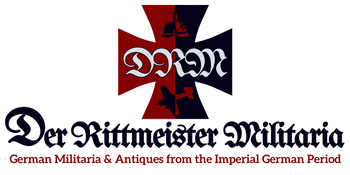Reuss Younger Line (Fürstentum Reuß jüngere Linie)
CLICK HERE FOR ALL PRODUCTS RELATED TO REUSS
Basic Information
- Official Name: Principality of Reuss Younger Line (Fürstentum Reuß jüngere Linie)
- Capital: Greiz
- Motto: "Ich baue auf Gott" (I build on God)
- Established: 1848 as a principality (earlier as a county under the House of Reuss)
- Dissolution: Transitioned to the Free State of Reuss in 1918 following the abdication of Prince Heinrich XXVII.
-
Key Symbols:
- Coat of Arms: A golden lion on a black field, surrounded by ornate decorations.
- Flag: Black, red, and yellow horizontal stripes.
Geographical Overview
-
Location:
Situated in central Germany, bordered by Reuss Elder Line, Saxe-Weimar-Eisenach, and other Thuringian states. -
Size:
Slightly larger than the Elder Line territory, with hilly terrain, forests, and small towns like Greiz, Schleiz, and Zeulenroda. -
Land Features:
- Thuringian Highlands: A region of dense forests and rolling hills.
- Weiße Elster River: Played a crucial role in local agriculture and trade.
Historical Timeline
-
Early Reuss Younger Line:
- 12th Century: Part of the House of Reuss, divided into the Younger and Elder Lines in the 16th century.
- 17th–18th Century: Maintained as a county, later elevated to a principality in 1848.
-
Principality Era (1848–1918):
- Governed by the Younger Line of the House of Reuss, continuing the tradition of naming all male rulers Heinrich.
- 1871: Integrated into the German Empire with autonomy in local governance.
-
Decline (1918):
- The abdication of Prince Heinrich XXVII during the German Revolution led to the unification of the Elder and Younger Lines into the Free State of Reuss.
Notable Rulers and Leaders
- Heinrich XIII (1806–1817): A reformist leader who laid the groundwork for the principality’s modernization.
- Heinrich XXVII (1902–1918): The last prince, whose reign ended with his abdication in 1918.
Military and Political Strength
-
Military Contributions:
- Provided troops to the Imperial German Army, often integrated with regiments from neighboring states.
- Known for their light infantry and engineering units.
-
Political Role:
- Governed as a constitutional monarchy with representation in the Bundesrat.
- Played a minor but stable role in German unification under Prussian leadership.
Cultural Contributions
-
Architecture:
- Greiz Upper Castle (Oberes Schloss): A medieval fortress and ducal residence overlooking Greiz.
- Lower Castle (Unteres Schloss): A Baroque palace used as an administrative center.
-
Arts and Literature:
- The principality supported folk music and crafts, particularly woodworking and textile arts.
- Regional traditions were celebrated in festivals and storytelling.
-
Education and Science:
- Focused on agricultural education, reflecting the rural economy.
- Promoted forestry conservation and ecological research in the Thuringian Highlands.
-
Cuisine:
- Known for simple yet hearty dishes, such as Thuringian sausage and potato-based stews.
- Local desserts included Zeulenrodaer Kuchen, a specialty cake from the region.
Fall of Reuss Younger Line
-
World War I (1914–1918):
- The war exacerbated economic challenges and unrest in the small principality.
-
German Revolution (1918):
- Prince Heinrich XXVII abdicated, and the Elder and Younger Lines merged into a unified Free State of Reuss.
-
Post-WWII (1945):
- Incorporated into Thuringia under East German administration and later became part of modern Thuringia after reunification.
Connections to Products
-
Cultural Artifacts:
- Miniatures and artwork featuring the Greiz Upper and Lower Castles.
- Folk crafts and woodworking items reflecting the region’s traditions.
-
Military Memorabilia:
- Medals, badges, and documents from Reuss troops in the Imperial German Army.
- Maps and records detailing military alliances with neighboring states.
-
Historical Documents:
- Administrative records and royal decrees from the House of Reuss Younger Line.
- Correspondence and treaties related to the principality’s governance.
-
Tourism and Culinary Items:
- Guidebooks and postcards featuring landmarks like the Greiz castles and scenic Thuringian Highlands.
- Recipe books and tools for preparing regional dishes like Thuringian sausage and Zeulenrodaer Kuchen.
-
Educational Contributions:
- Publications and artifacts from local agricultural and forestry schools.
- Historical records of conservation efforts in the Thuringian forests.









